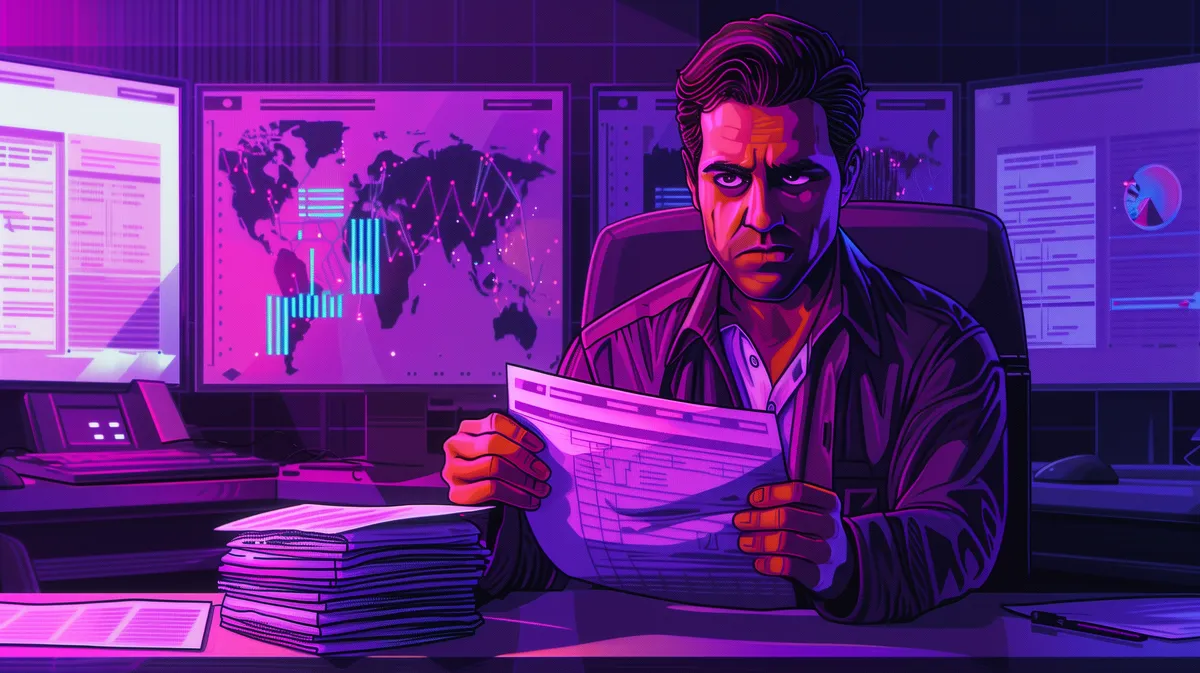
Cyber Threat Intelligence Vendors Have Failed Cyber Defenders
CTI has become a multimillion dollar illusion. Vendors sell prestige not protection. Intelligence is hollow. Reports are useless. Defenders are left stranded while the industry celebrates itself. This is not failure. It is betrayal disguised as expertise. The reckoning is coming.
Cyber Threat Intelligence is not just broken. It has been corrupted. Not by the core idea, but by the vendors who twisted it into a self-congratulatory industry of vanity metrics and performative output. What was once meant to empower cyber defense has rotted into a dumping ground of overpriced PDFs, nearly useless dashboards, and empty theater. Intelligence is supposed to enable action. Instead, it has been hijacked by marketing departments chasing headlines, and executives consumed by their own hubris. Vendors have become addicted to their own applause. They care more about how intelligent they appear than whether their intelligence products actually work. The result is a discipline now serving itself rather than the intelligence analysts and defenders it was built to help.
That does not mean there is zero value in what vendors produce today. But the bar is far lower than the marketing implies. This is not a wholesale dismissal of the concept of cyber threat intelligence, nor a denial that some vendor outputs contain genuine value. There are very smart, highly capable analysts inside these organizations doing amazing, and difficult work. There are moments when reporting is timely, when analysis is sharp, and when customers gain something useful. But these moments are rare. They are not the baseline. They are an anomaly. What the industry delivers at scale is stale. It is difficult to use. It is written in ways requiring sophisticated translation, adaptation, and internal guesswork. Most customers do not receive what they actually need to add value to their daily activities. They receive what the vendor feels like producing. The result is intelligence feeling distant, disconnected, and dangerously incomplete.
CTI today is more performance than practice. Vendors sell the illusion of insight. Reports are dressed in technical jargon, padded with threat actor summaries, and buried in indicators of compromise. At first glance, they appear polished. While the narratives are often well written, even if the prose is regularly reused from older reporting, there is rarely ever anything actionable. A SOC analyst cannot write detection rules from them. A CISO cannot brief a board. A vulnerability team cannot prioritize risk. All of these stakeholders are left staring at a screen, wondering what they just paid this insane subscription fee for.
This is not accidental. It is systemic. CTI today is not built for the customer. It is built for the vendor. Reports are written to sound impressive to peers and industry insiders. They are not designed to answer real questions or support real decisions. Customers are expected to reverse-engineer utility from what is essentially a press release disguised as analysis. And even when they try, they must have skilled practitioners to interpret the material. These specialists waste time translating what should have been clear in the first place. That translation often fails. Not because the practitioner lacks the skill, but because the source material was almost never built to be operational.

Disconnected by Design
Context is almost always absent. Intelligence reports rarely reflect the customer’s environment. They are not mapped to deployed technology. They do not reference the actual tools in use or the vendor tech stack the organization relies upon to conduct mission critical business. Threats are abstract. Recommendations are vague, if present at all. Relevance is missing. Reports are written generically, then sold widely. The largest spenders may get a nod to customization. Everyone else is left with a bland, impersonal product that could have been written for anyone.
The failures run even deeper. The entire CTI industry is infected with Western bias. Most vendors are headquartered in the United States. Most analysts come from Five Eyes and adjacent government backgrounds. They are highly skilled, but their worldview is narrow. Intelligence is shaped by what matters to Washington, not to Riyadh, Jakarta, or Tokyo. Reports are almost always written solely in English. Threat actor focus centers on adversaries of the United States. Regional threats are downplayed or outright ignored. When customers from outside the privileged sphere ask for relevance, they are met with deflection.
Worse still, they are treated like noise. If you are a customer from the Middle East, Southeast Asia, or Africa, vendors often see you as friction. You are a mosquito. You ask too many questions. You pay too little. You expect too much. The message is unspoken but clear. You are not the priority. You are the nuisance. The real clients are in Washington, New York, and London. The rest of you are just tolerated.
And then there is the unspoken truth no vendor dares acknowledge. Western offensive cyber operations exist. They are massive. They are aggressive. They are highly effective. Yet no vendor will admit this. There is an unwritten line they will not cross. Intelligence is allowed to speak in one direction only. Attribution ends at the borders of Five Eyes governments. The hypocrisy is staggering. Vendors pretend neutrality while peddling narratives conveniently avoiding uncomfortable truths. They bury their heads in the sand while the elephant in the room tramples the entire discipline. This is not tradecraft. This is cowardice.

Tailored in Name Only
Bespoke reporting, for some unknown reason long marketed as a premium tier of CTI, is just as broken. Customers are promised tailored insights. What they receive is recycled analysis stitched together from previous work, regurgitating reused narratives rather than fresh analysis. There is no originality. No uplift. Just warmed-over paragraphs and shallow observations disguised as tactical, operational, or strategic guidance. The customer ends up doing the vendor’s job. They connect the dots. They dig through archives. They reassemble what they already bought.
CTI vendors act as gatekeepers. They decide what is important. They publish what they want to say, not what the customer needs to know. Intelligence is created from the inside out. The process is self-referential, insulated, and self-serving. High-profile adversaries get attention because they drive headlines. Sophisticated threats are amplified because they impress peers. Meanwhile, the actors actually targeting your environment are ignored. They are too pedestrian. Too regional. Not sexy enough to make the vendor blog.
This distortion has real consequences. Resources are misallocated. Time is wasted. Risk is misunderstood. Security programs chase ghosts while real threats slip past undetected.

Unspoken Rules of the Game
Perhaps the most offensive part of all is the commercial model. Intelligence is crafted for a small inner circle of elite customers. Yet it is sold to everyone. CISOs, threat hunters, SOC managers, vulnerability teams; they are all provided the same reports. Most of them cannot use these documents. The intelligence is too dense, too narrow, or too irrelevant. But the price remains high. Everyone pays. Almost no one benefits.
This is not sustainable. It is a grift hiding behind a veneer of sophistication.
CTI must be rebuilt from the ground up. It must be reimagined. Intelligence should not be an artifact. It should be an action. It must be specific. It must be contextual. It must be delivered in the language of its users, no matter if that is English, Japanese, Arabic, Korean, or more. It must reflect the threats customers actually face, not the ones scoring the most likes on LinkedIn, or getting U.S. law enforcement agencies excited.
The notion that cyber threat intelligence should be locked behind insanely expensive paywalls must die. Vendors justify these costs by claiming human analysts are behind every report, conducting deep investigations, and crafting insights by hand. But this is a fiction. Much of the analysis today is driven by automated data pipelines, distilled by machine learning, and written with the assistance of generative AI.
The cost to produce these reports has dropped dramatically while the price to access them has not. Intelligence is not a luxury. It is a necessity. And it must be immediately useful. Not after an analyst spends four days trying to extract value. Not after a scheduled call with a solutions engineer or professional services. Not after waiting for a custom engagement. It must deliver value the very moment it is consumed.

Conclusion
The major CTI vendors dominating the market today are not leaders. They are relics. Hollow incumbents propped up by legacy contracts, loud marketing, and a long-forgotten reputation for relevance. They used to provide value, but that has long since disappeared. They have coasted on brand recognition while delivering minimal value. They charge premium prices for intelligence very few organizations can adequately use, and dare to call it innovation.
But the cracks are no longer hidden. Customers are done pretending. They see the waste. They feel the disconnect. The illusion is not collapsing. It is imploding.
This is not an industry in need of gentle reform. It is a system overdue for collapse. CTI must be rebuilt from the ground up. It must be stripped of vanity, stripped of upscale paywalls, stripped of the theater protecting vendor egos while defenders are left exposed. CTI must be precise. It must be contextual. It must be delivered in the language, format, and urgency modern defenders demand. Not in quarterly reports. Not in sanitized PDFs. Not in public facing marketing documents built for applause, and pats on the back.
The future will not be written by those clinging to outdated models. It will belong to those who understand cyber threat intelligence is a responsibility to uphold. The vendors unwilling to evolve will not be remembered. They will be replaced. And those who rise in their place will not be the loudest. They will be the ones who finally deliver what this industry has long promised but never fulfilled.
Real intelligence. For everyone. Without compromise.

Support Praeryx Content
Are you passionate about advancing your understanding of cyber security and cyber threat intelligence, and want to see more in-depth, thought-provoking content like this? Consider supporting Praeryx in our mission to educate and empower with a donation directly contributing to the continued creation of valuable resources and insights, helping Praeryx to provide impactful and timely content. Join us in building a more secure digital future by donating today!
Donate to Praeryx





